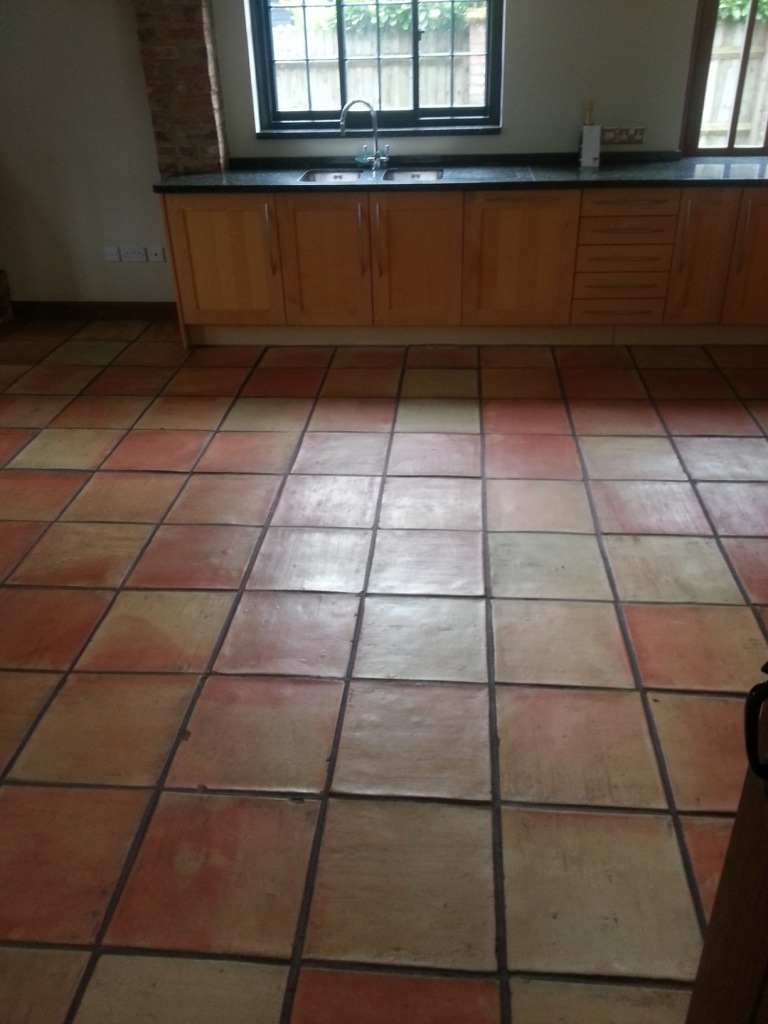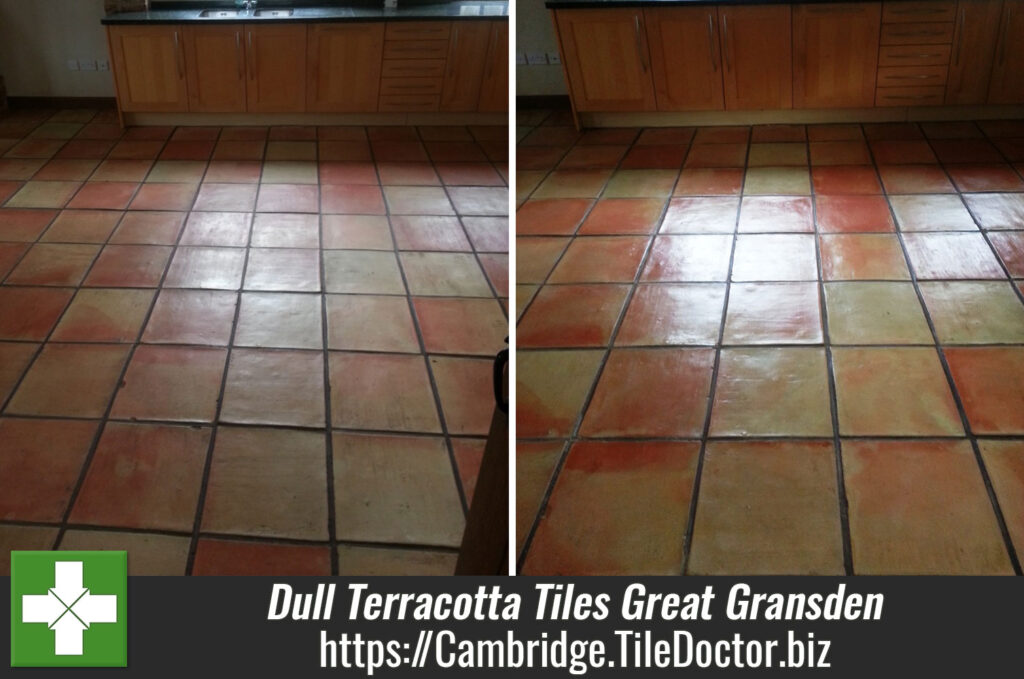Due to its naturally high porosity, Terracotta is more susceptible to ingrained dirt than other types of stone tile. Typically, this downside is simple to offset with professional maintenance, including deep cleaning with suitable products and maintaining the sealer.


Cleaning a Dirty Terracotta Tiled Floor
The first step in the restoration was to strip the floor of the very old sealer by applying Tile Doctor Pro Clean, which both breaks down old sealers and removes light to medium soil buildup. After allowing the product twenty minutes to dwell, I went over the floor with a black scrubbing pad fitted to a rotary machine to ensure all of the old sealer was removed, mopping and rinsing the floor several times during the process.
Following this, I used a steamer in combination with Tile Doctor NanoTech HBU – a cleaner that uses nano-sized particles to penetrate and dissolve tough stains – to tidy up some of the more stubborn areas of muck. Finally, I gave the entire floor, including the grout lines, an acid rinse with Tile Doctor Grout Clean Up to remove inherent grout haze etc.
Sealing a Terracotta Tiled Floor
Once the cleaning process was complete, I left the floor to dry completely for 24 hours. This is the typical drying time for most natural stone floors, although the process will be sped up if there is a damp proof membrane or underfloor heating installed.




Sealers protect your floor from staining and enhance the floor of the stone, however they do wear down over time depending on floor traffic and what products are used to clean the floor (don’t use anything even mildly acidic) and this is when dirt can become ingrained in the stone, so if you do want to keep your floor looking its best talk to Tile Doctor their regular maintenance service that will ensure your sealer is kept topped up.